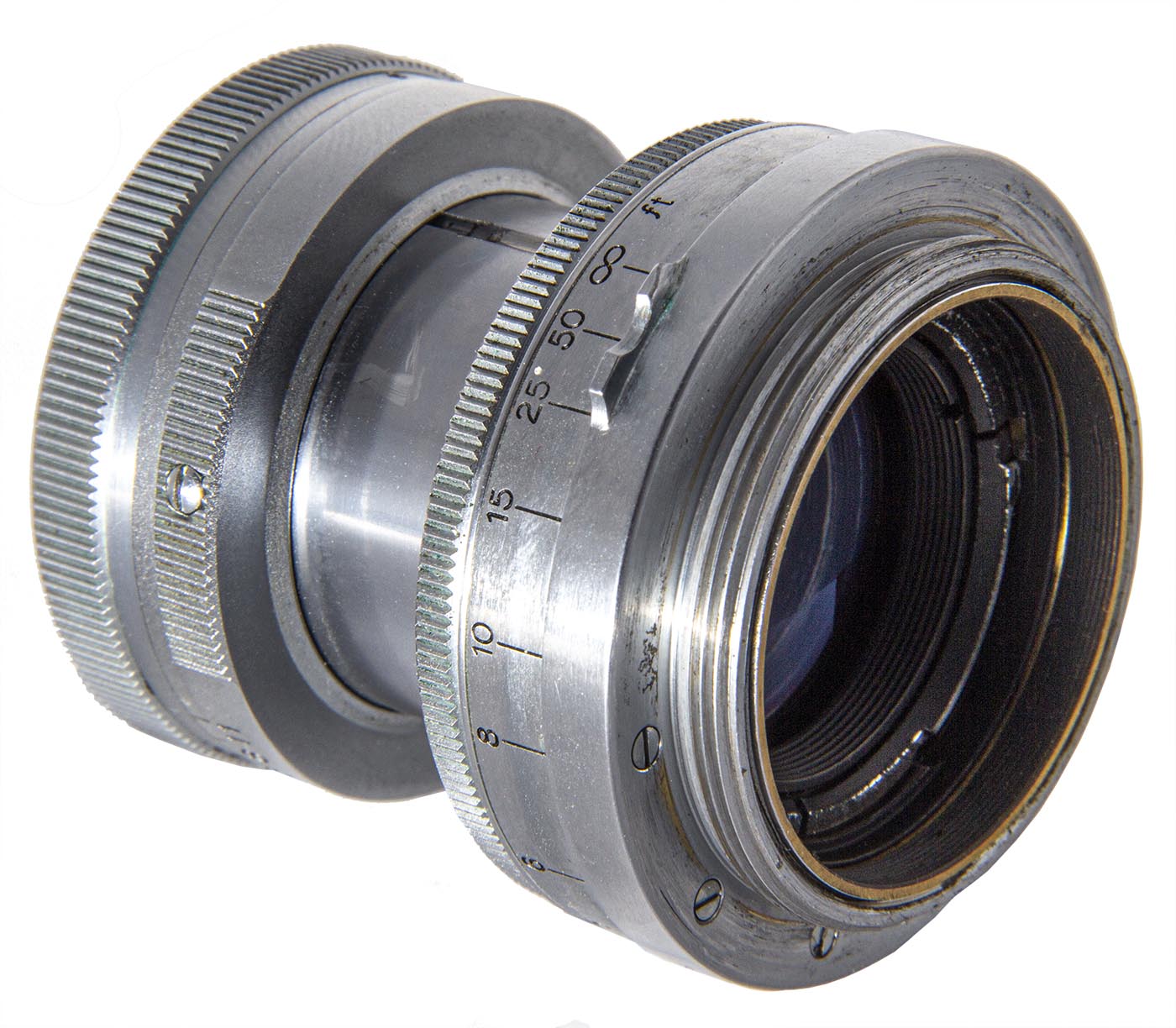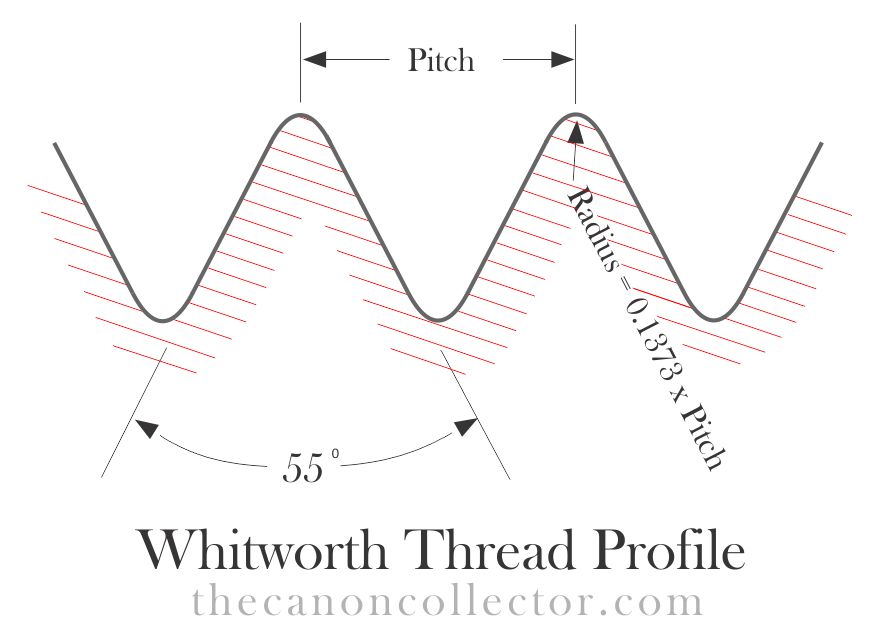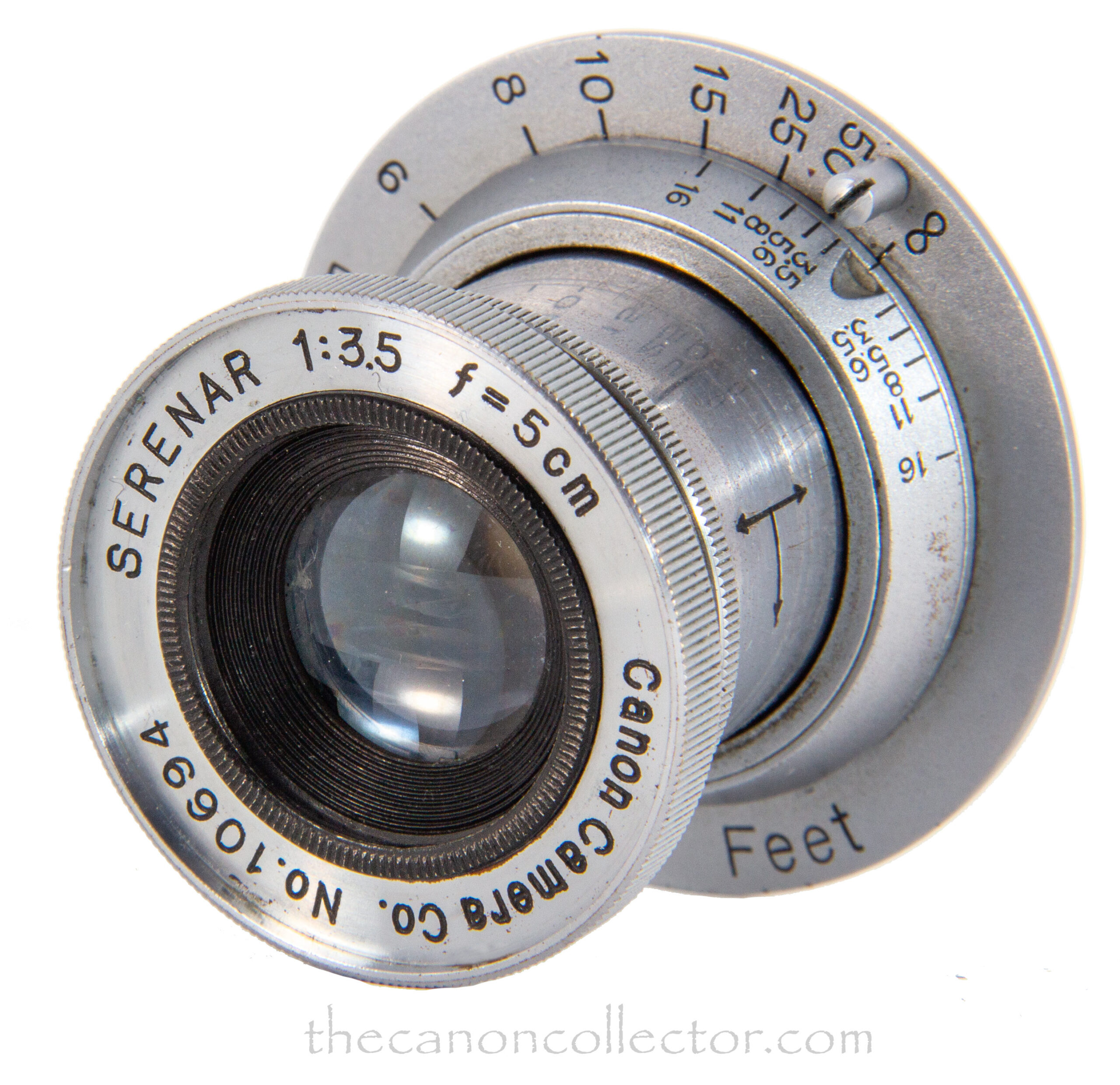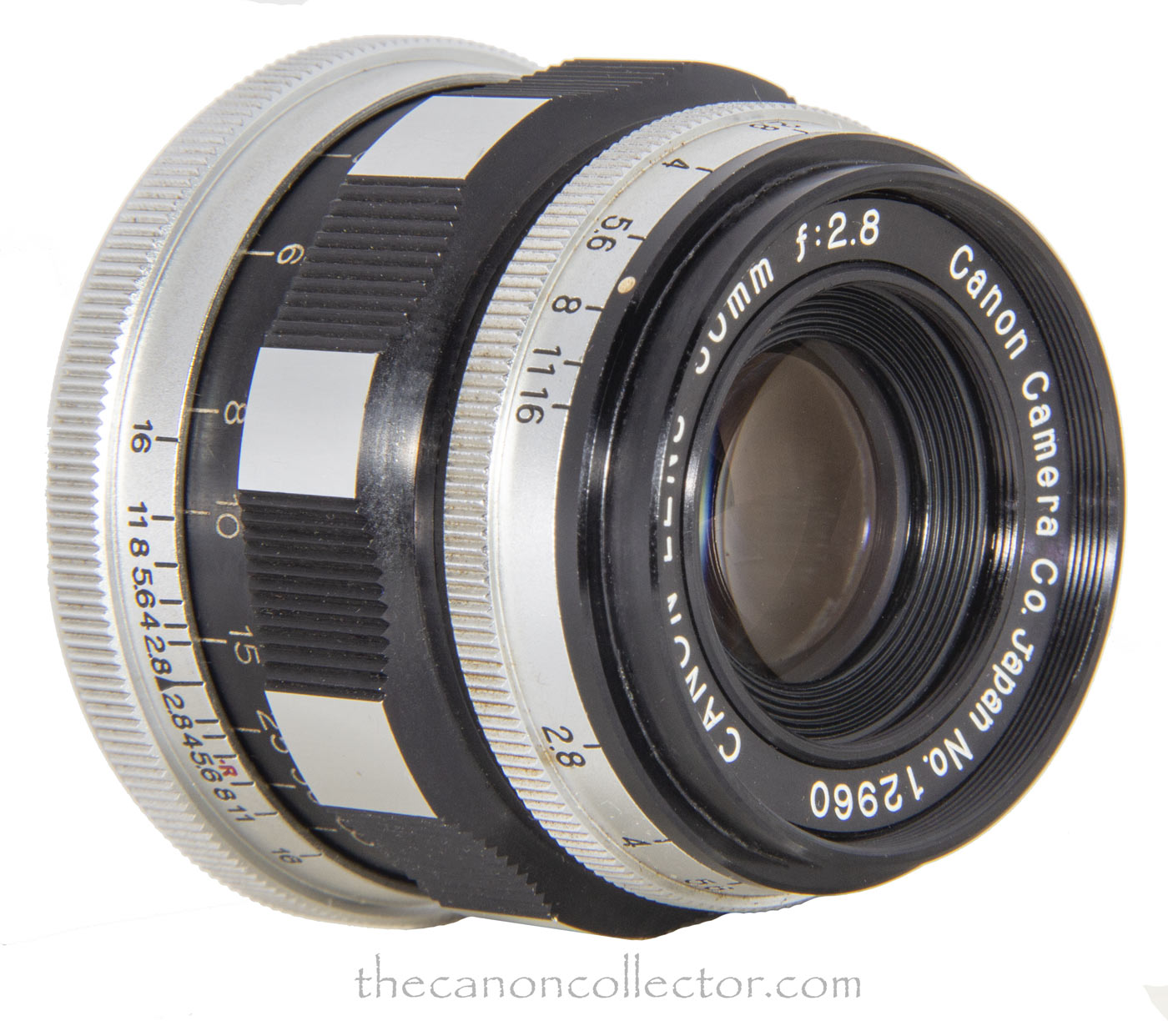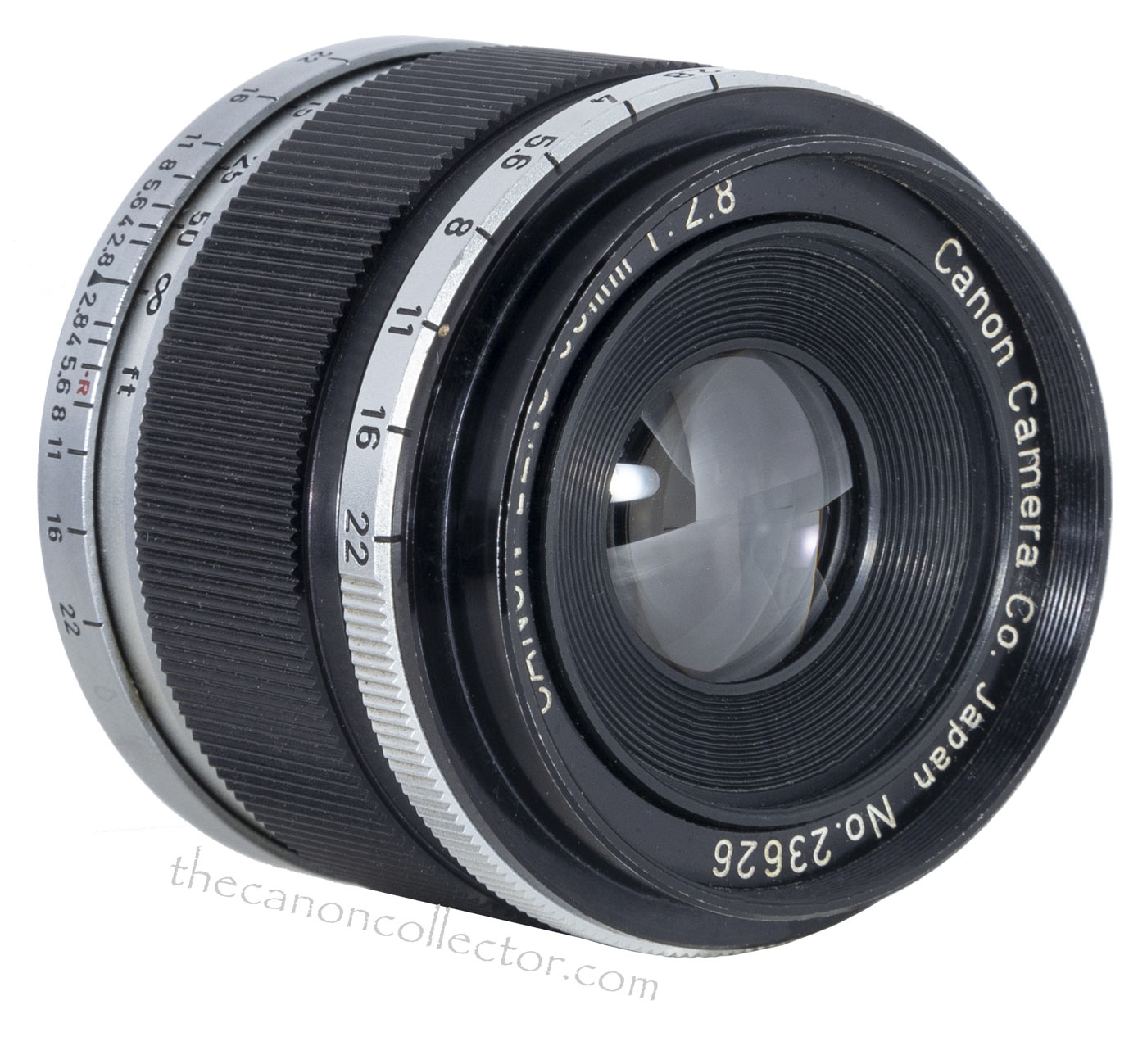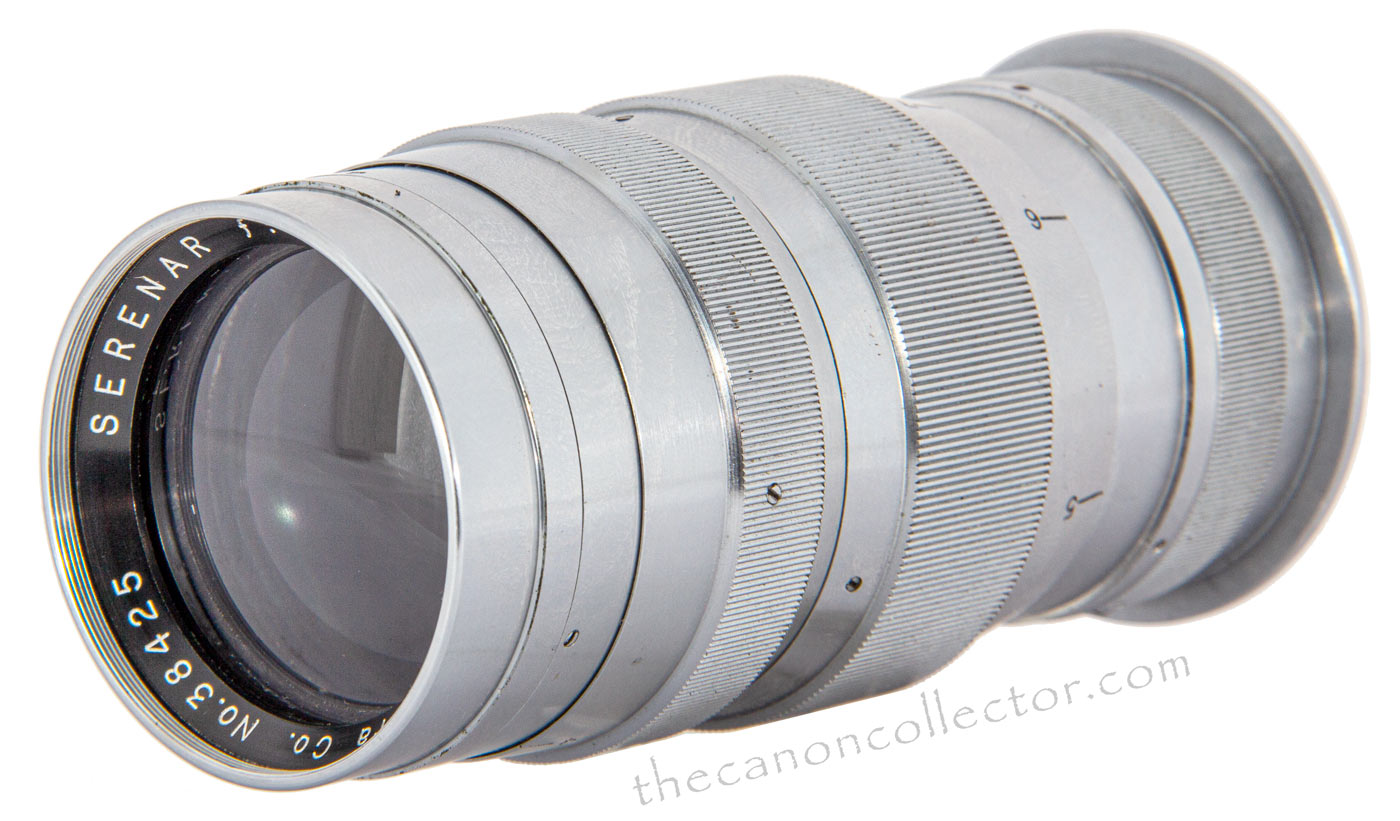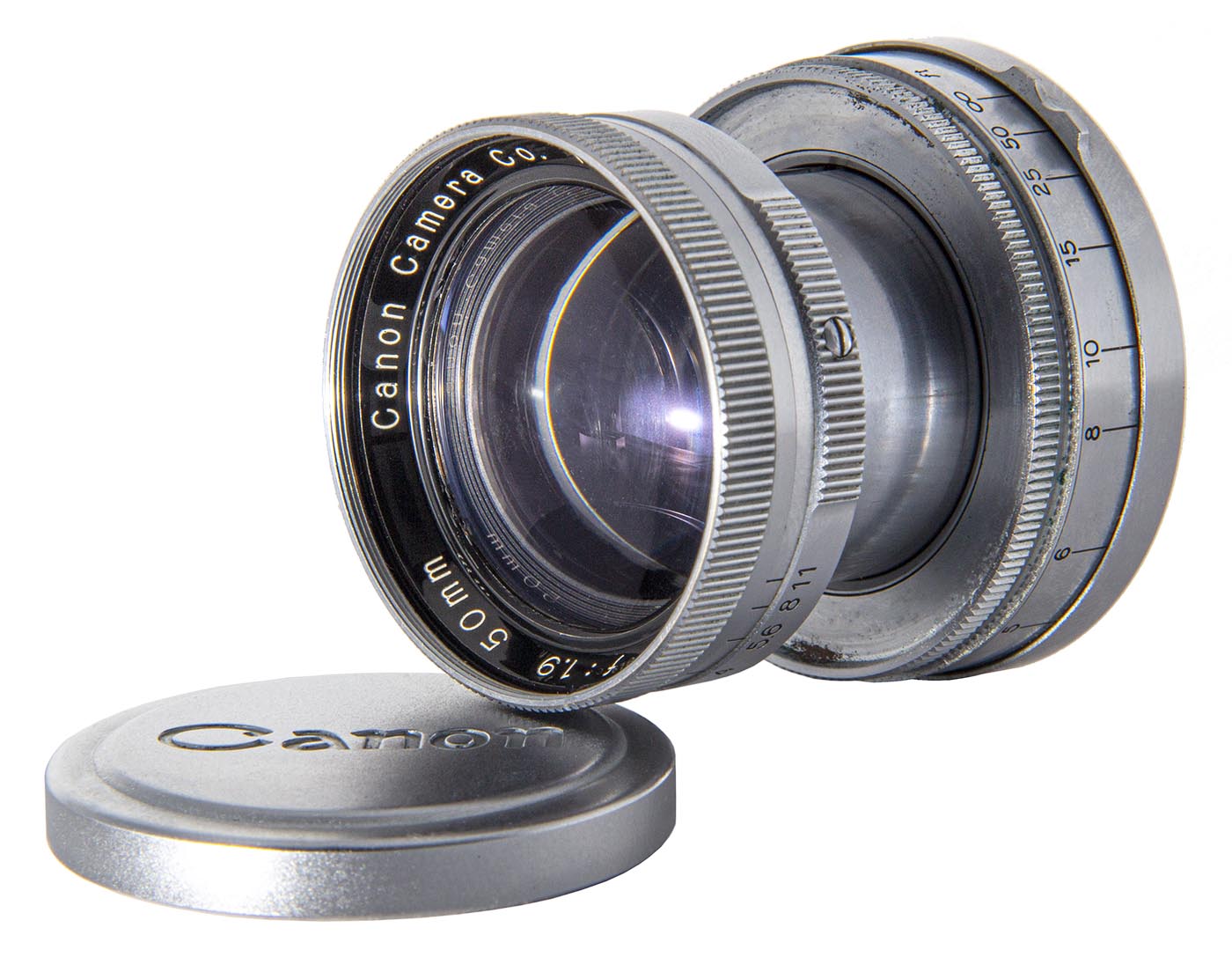
The Rangefinder Lenses
Often called the S Series
What was to become the Canon company began in the 1930’s as the world was ramping up for war and the chaos that brought about. And in the
beginning they did not make their
their own lenses. Lens making is a
separate art apart from the
manufacture of cameras. It requires a totally different skill set.
Initially Seiki Kogaku Kenkyusho (Precision
Optical Instuments Laboratory), which later was to
become the Canon Camera Company, contracted with
Nippon Kogaku Kogyo (Japan Optical Industries), later to
become the Nikon company, to supply lenses and rangefinder optics for
their first cameras
Canon intended, from the beginning, to make cameras with interchangable lenses, and so lens mounts were a major subject of concern. But Leitz, in 1934, had filed for and received a Japanese patent for its focusing and rangefinder mechanism. Canon was trying to emulate the success of the Leica camera but it could not use the Leitz system. Working with Nippon Kogaku they developed their own focusing and range finding system that did not infringe on the Leitz patents. Once the war was over and Germany was defeated, and no longer an ally of Japan, their patent protection largely evaporated and Canon and others were able to use the Leitz system.
In the result the story of the earliest Canon lens mounts is a little chaotic. However, by the early 1950’s Canon had effectively adopted the Leica threaded lens mount for its cameras. So, let’s unpack all of this history and see what we get.
The M39 threaded lens mount is simple and effective. The thread is clearly visible on the back of this Serenar 50mm f/1.9 collapsible lens.
Before we get into the Canon lens mounts we have to deal with the elephant in the room: the M-39 Leitz Thread Mount (LTM). To do that, we have to review a little history.
At the beginning of the 19th century effective thread cutting machines were coming into their own. However, everyone who had one of these machines was producing threaded equipment without any standards and so one manufacturer’s bolts would not fit another’s nuts. It was inefficient and inconvenient.
In the late 1830’s and early 1840’s Joseph Whitworth, an English Engineer, studied available threads and devised a standard thread which he published as a suggested industry wide standard. He was instrumental in bringing standardized threads into being. His pioneering work is still visible in today’s thread standards.
Any thread today with the form factor he suggested is referred to as a Whitworth thread. Later in the 1800’s the microscope manufacturers adopted the Whitworth thread as the standard for their industry.
Now, to change tack a little, Ernst Leitz was a trained watch and instrument maker when he assumed control of the little optical company “Optisches Institut” in Wetzlar, Germany, in 1869. He ran the company under his own name going forward and developed it into a formidable optical company engaged in the manufacture of microscopes and similar optical equipment.
In 1911 an engineer by the name of Oskar Barnack began working in the Motion Picture Department of Leitz. He was an amateur photographer and loved to hike in the countryside around Wetzlar. He wanted a camera he could carry with him. Unfortunately, in those days cameras were large and cumbersome and an obstacle to a day in the country.
Not able to find what he wanted he began to design his own camera using the resources available at the Leitz company. Around 1914 he presented this camera to the company suggesting they manufacture it. However, Leitz was not making cameras at the time and the war was beginning so the project got shelved.
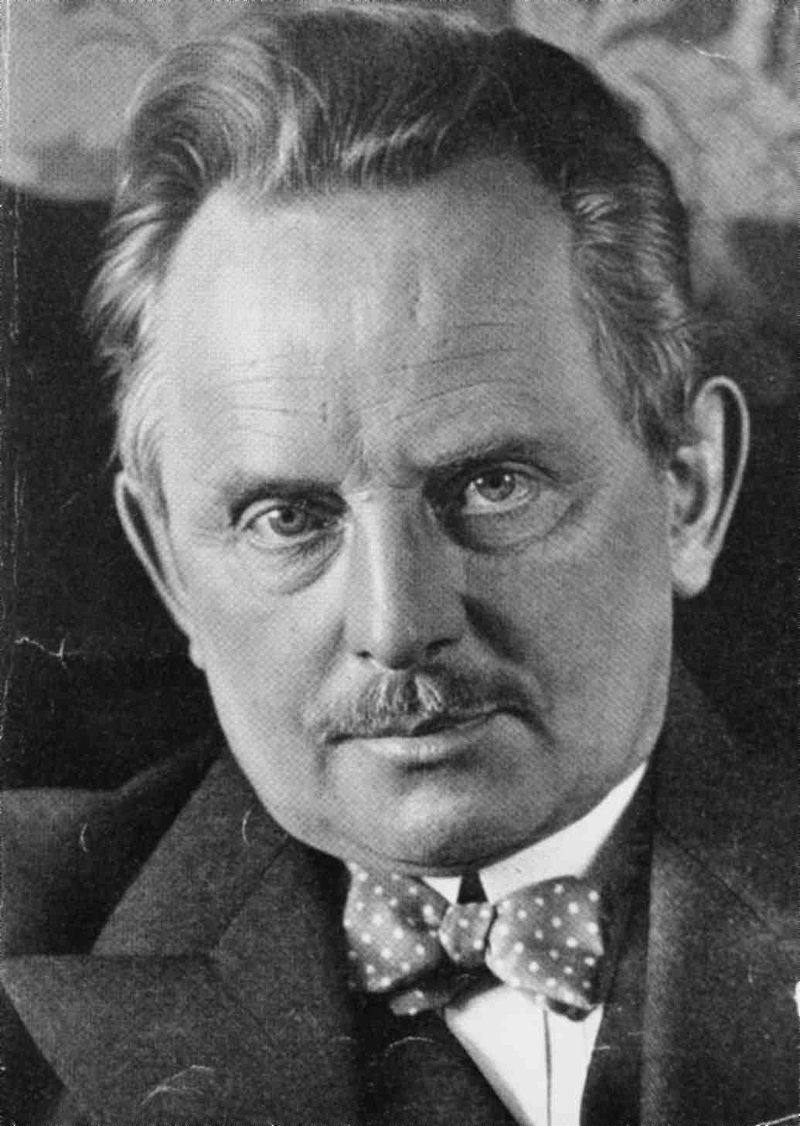
Oskar Barnack – 1879-1936
Barnack’s design made use of the 35mm motion picture film he worked with. Motion picture cameras placed the image across the film but Barnack turned the image by 90 degrees so it ran lengthwise on the film. This gave him a larger film area but it was still small and would require good lenses to produce adequate image sharpness.
After the war he again promoted his camera idea to the company and this time they encouraged him and at the Leipzig Spring Fair in 1925 the first model of the Leica camera was introduced. However, this camera had a fixed lens. Barnack went back to work and came up with new lens mount, again using what he had at available at Leitz. He created a thread mount that was 39mm in diameter with 26 threads per inch. This works out to a thread pitch of approximately 0.977mm. Thread pitch is the distance between thread crests. Leitz being a microscope manufacturer was already tooled up to cut Whitworth threads so that form factor was adopted. Because of the need to cover an image area of 24x36mm a flange distance of 28.8mm was considered adequate.
The M-39 LTM went on to become a standard in the photo industry and some of the finest lenses available were made with this mount. And, as we have said, the mount and the rangefinder coupling was protected by patents. With this background we can now approach the subject of early Canon lens mounts.
“J” Flange (The first Lens Mount)
Canon’s first commercial camera was the Canon Hansa which appeared in 1935 when Leitz patents were still effective. The folks at Canon consulted with Nippon Kogaku about the design of a new lens mount and rangefinder coupling. The result was a mount that did not offend the patents but still allowed for interchagable coupled lenses.
Canon built their bodies with a threaded mount very similar to the M-39 LTM . It was basically a 39mm opening with a thread of 1/24″ pitch, approximately 1.06mm which worked out to 24 threads per inch. The Nippon Kogaku built mount screwed into this hole and was secured by a set screw so that it was not easily removed. This mount would then accept the lens which was secured with a bayonet system.
Focus was by turning a toothed wheel on the side of the mount in the 10 o’clock position (looking from the front) and the connection to the rangefinder was by a pin that extended back into the camera body and moved in and out with the focus adjustment. This pin is located at the 1 o’clock position.
The screw mount in the camera body has come to be called the Canon J Flange mount. Although close in size to the Leitz M-39 LTM it will not accept those lenses.
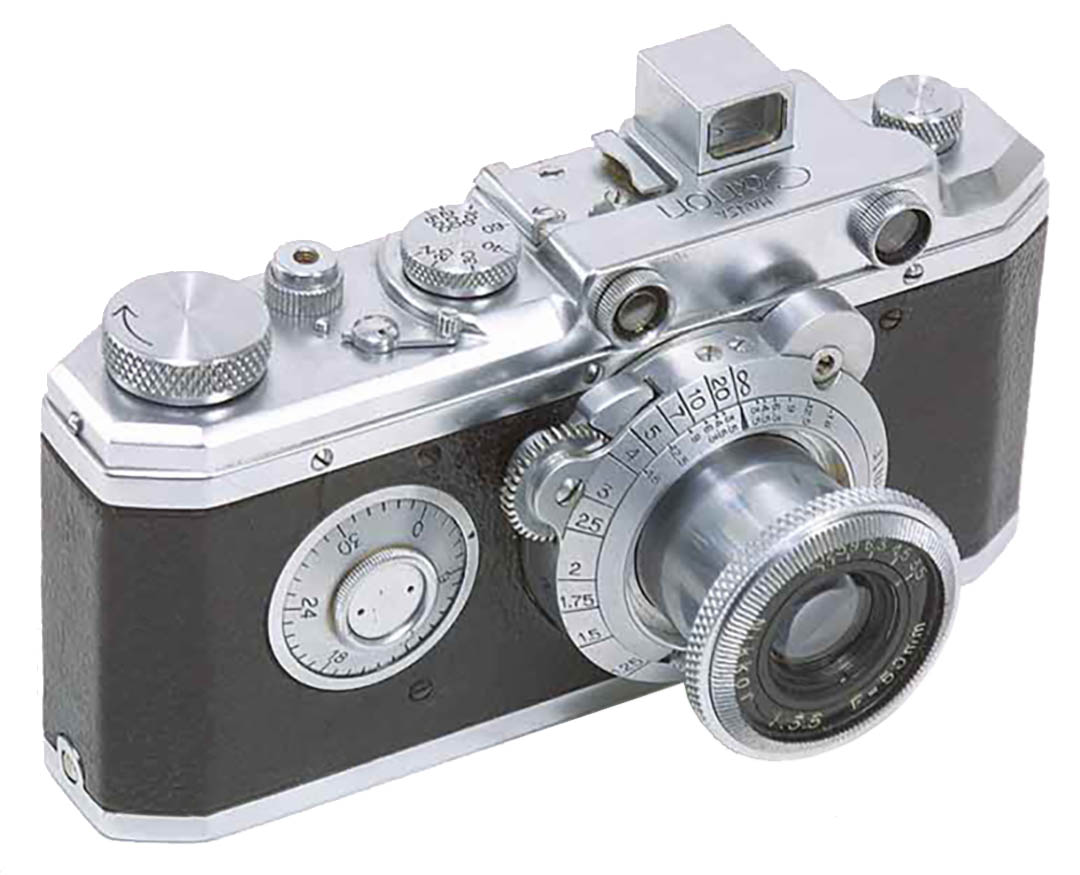
The Nippon Kogaku lens in mounted in the focusing unit which will move it to and from the film plane to achieve proper focus. (Photo from pacificrimcamera.com)

This Canon Hansa has its 50mm Nippon Kogaku lens removed from the focusing mount. You can see that it is a bayonet mount into the focusing unit. (Photo from canonrangefinder.org)
This same arrangement was used on the Seiki Kogaku (Canon) Model S introduced in 1938. In 1939 the company introduced the Canon J. On this camera the Nippon Kogaku lens screwed directly into the J Flange. The patent problem was overcome by not having any rangefinder at all but rather just an optical finder and focus was by using the distance scale on the lens only. They did this again in 1941 with the Model JS and the Model J-II immediately after the war.
Semi-Universal Mount
The Seiki Kogaku Model S-II was a pivotal camera for Canon. Production began in 1946 and continued until 1949. The cameras began marked as “Seiki Kogaku, Tokyo” but during production Canon changed its name on 15 August 1947 to Canon Camera Company Ltd. and from that date all S-II’s were so marked.
The lens mount on the S-II went through several experimental versions. A few had the old J Flange, some had experimental thread mounts, but most had a new thread mount that has come to be called the Semi-Universal Flange. This was half way between the old J Flange and the M-39 LTM.
This mount represented Canon trying to ride two horses at the same time. The M-39 mount had a pitch of 26 threads per inch. The Canon J Flange was a 39mm thread with a pitch of 24 threads per inch. Leitz lenses would not screw into it. With the Semi-Universal Flange Canon came closer to the Leitz standard. It was still not exact but most Leitz lenses would fit it. Because the J Flange, the Semi-Universal Flange and the LTM lenses had the same, or close enough, flange distance so that if they would fit in the mount they would focus correctly. But why Canon went to the Semi-Universal Flange is a mystery to me so far.
The Universal Lens Mount (a.k.a. M-39 LTM)
The Canon Museum lists the first lens in this list as the first lens manufactured by Canon. It may be the first lens sold commercially but apparently Canon did manufacture some lenses during the war. But even Canon does not want to try and sort out the lenses on Canon cameras prior to 1946. I don’t blame them!
When reading this list, bear in mind that Kitchingman in his excellent book, finds many variations and sub classifications amongst these lenses. However, trying to collect all of these variations would quickly become prohibitively expensive, at least for me. I would be thrilled to have just one of each of these. The ones I do have are shaded with blue. You can see I have a long way to go!
| Lens Name | Date | Groups | Elements | Notes |
| Serenar 50mm f/3.5 I | Jan 1946 | 3 | 4 | Thread mount – 24/in – 1.058 Pitch |
| Serenar 50mm f/2 | Feb 1947 | 4 | 6 | Seiki Kogaku |
| Serenar 135mm f/4 I |
Mar 1947 |
3 | 4 | 40mm Filter |
| Serenar 85mm f/2 I | Jan 1948 | 4 | 6 | 48mm Filter |
| Serenar 100mm f/4 I | Jan 1948 | 3 | 3 | 34mm Filter |
| Serenar 135mm f/4 II | Jun 1948 | 3 | 4 | 40mm Filter |
| Serenar 50mm f/1.9 | Jan 1949 | 4 | 6 | 40mm Filter – Collapsible |
| Serenar 35mm f/3.5 | Mar 1950 | 3 | 4 | |
| Serenar 100mm f/4 II | Apr 1950 | 3 | 3 | 34mm Filter |
| Serenar 35mm f/3.2 | Jun 1951 | 4 | 6 | 34mm Filter |
| Serenar 85mm f/1.9 I | Aug 1951 | 4 | 6 | 48mm Filter |
| Serenar 85mm f/2 II | Sep 1951 | 4 | 6 | 48mm Filter |
| Serenar 28mm f/3.5 I | Oct 1951 | 4 | 6 | 34mm Filter |
| Serenar 35mm f/2.8 I | Oct 1951 | 4 | 6 | 34mm Filter |
| Serenar 50mm f/1.8 I | Nov 1951 | 4 | 6 | 40mm Filter (Rigid – Canon Lens version) |
| Serenar 85mm f/1.5 I | Jun 1952 | 4 | 7 | 58mm (also as a “Canon Lens”) |
| Serenar 50mm f/3.5 II | Aug 1952 | 3 | 4 | 34mm Filter |
| Serenar 50mm f/1.5 | Nov 1952 | 3 | 7 | 40mm Filter (Rigid – also as a “Canon Lens”) |
| Serenar 135mm f/3.5 I | Dec 1952 | 3 | 4 | 48mm Filter |
| Serenar 100mm f/3.5 I | Jan 1953 | 4 | 5 | 34mm Filter |
| Serenar 800mm F/8 I | Mar 1953 | 1 | 2 | 35.5mm Filter |
| Canon Lens 50mm f/2.8 I | Jan 1955 | 3 | 4 | 34mm Filter |
| Canon Lens 50mm f/1.8 II | Feb 1956 | 4 | 6 | 40mm Filter |
| Canon Lens 50mm f/1.2 | Sep 1956 | 5 | 7 | 55mm Filter |
| Canon Lens 400mm f/4.5 I | Sep 1956 | 4 | 5 | 36.5mm Filter |
| Canon Lens 25mm f/3.5 | Dec 1956 | 3 | 5 | 40mm Filter |
| Canon Lens 28mm f/3.5 II | Jan 1957 | 4 | 6 | 40mm Filter |
| Canon Lens 35mm f/2.8 II | Jan 1957 | 4 | 6 | 40mm Filter |
| Canon Lens 200mm f/3.5 | Mar 1957 | 5 | 7 | 36.5mm Filter |
| Canon Lens 35mm f/1.8 | May 1957 | 4 | 7 | 40mm Filter |
| Canon Lens 28mm f/2.8 | Jun 1957 | 4 | 6 | 40mm Filter |
| Canon Lens 50mm f/1.4 I | Nov 1957 | 4 | 6 | 48mm Filter |
| Canon Lens 50mm f/2.8 II | Nov 1957 | 3 | 4 | 40mm Filter |
| Canon Lens 100mm f/3.5 II | Apr 1958 | 4 | 5 | 34mm Filter |
| Canon Lens 135mm f/3.5 II | Apr 1958 | 3 | 4 | 48mm Filter |
| Canon Lens M 135mm f/2.5 | Jul 1958 | 4 | 6 | 58mm Filter (for Mirror Box 2) |
| Canon Lens M 200mm f/3.5 | Jul 1958 | 5 | 7 | 58mm Filter (for Mirror Box 2) |
| Canon Lens 35mm f/1.5 | Aug 1958 | 4 | 8 | 48mm Filter |
| Canon Lens 85mm f/1.9 II | Aug 1958 | 4 | 6 | 48mm Filter |
| Canon Lens 600mm f/5.6 I | Sep 1958 | 1 | 2 | 36.5mm Filter |
| Canon Lens 50mm f/1.8 III | Dec 1958 | 4 | 6 | 40mm |
| Canon Lens 100mm f/2 | Jan 1959 | 4 | 6 | 58mm Filter |
| Canon Lens 50mm f/2.8 III | Feb 1959 | 3 | 4 | 40mm Filter |
| Canon Lens 50mm f/1.4 II | Aug 1959 | 4 | 6 | 48mm Filter |
| Canon Lens 300mm f/4 | Jan 1960 | 4 | 5 | 48mm Filter |
| Canon Lens 400mm f/4.5 II | Jan 1960 | 4 | 5 | 48mm Filter |
| Canon Lens 600mm f/5.6 II | Jan 1960 | 1 | 2 | 48mm Filter |
| Canon Lens 800mm f/8 II | Jan 1960 | 1 | 2 | 48mm Filter |
| Canon Lens 1000mm f/11 I | Jan 1960 | 1 | 2 | 36.5mm Filter |
| Canon Lens 1000mm f/11 II | Jan 1960 | 1 | 2 | 48mm Filter |
| Canon Lens 85mm f/1.5 II | Mar 1960 | 4 | 7 | 58mm Filter |
| Canon Lens 100mm f/3.5 III | Mar 1960 | 4 | 5 | 40mm Filter |
| Canon Lens 50mm f/2.2 | Jan 1961 | 4 | 5 | |
| Canon Lens 135mm f/3.5 III | Jan 1961 | 3 | 4 | 48mm Filter |
| Canon Lens 85mm f/1.8 | Mar 1961 | 4 | 5 | 58mm Filter |
| Canon Lens 50mm f/0.95 (Dream Lens) | Aug 1961 | 5 | 7 | 72mm Filter |
| Canon Lens 35mm f/2 I | Apr 1962 | 4 | 7 | 40mm Filter |
| Canon Lens 35mm f/2 II | Jul 1963 | 4 | 7 | 40mm Filter |
| Canon Lens 19mm f/3.5 | Aug 1964 | 7 | 9 | 55mm Filter |
Lenses in the Collection
I don’t have many of these S Series lenses as they are the scarcest and most expensive of the Canon collector lenses. However, I have a few. And with the blessing of the Canon R camera I am able to try them out. Unfortunately many, if not most, of these lenses have become fogged over the years. I have tried to remove this residue of age with things like ammonia, alcohol, and hydrogen peroxide usually to no avail. With all of them the construction is excellent and of the best materials.They are altogether marvelous.
This website is the work of R. Flynn Marr who is solely responsible for its contents which are subject to his claim of copyright. User Manuals, Brochures and Advertising Materials of Canon and other manufacturers available on this site are subject to the copyright claims and are the property of Canon and other manufacturers and they are offered here for personal use only.

